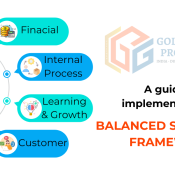
Sales Objections Handling
“Treat objections as requests for further information.”
Arguably the toughest aspect of any sales position is overcoming sales objections Whether you offer a service or are a small retail business, today’s buyers are more discerning than ever. Your goal is to have a convincing response to the roadblocks standing between you and that coveted sale.
An objection is not a rejection but simply a request for more information.
The word “no” can be a tough pill to swallow.
Some salespeople see most objections as a call to battle. With this attitude, it’s no wonder they handle sales objections poorly. However, when we break it down, you can see that objections can actually be a good thing.
What is a sales objection?
A sales objection is an explicit expression by a buyer that a barrier exists between the current situation and what needs to be satisfied before buying from you. In other words, it’s a clear signal that you have more work to do in the selling process.
The Most Common Sales Objections
Sales objections often signal that you haven’t made the value proposition case to the buyer as powerfully as possible. Typically, sales objections fall into one of the following categories:
- Need: Buyer doesn’t yet perceive, or doesn’t yet admit, the need to solve a problem.
- Urgency: The buyer doesn’t yet see why the issue is pressing.
- Trust: Buyer feels uncertainty about you, your solution, your company, or your outcomes.
- Money: Buyer communicates that money is going to be an issue.
Sound familiar? While these common sales objections might seem like steep hills to overcome, don’t despair: an objection indicates that the buyer is engaged, which sure beats apathy.
In an ideal world, your prospects are ready, willing, and able, thanks to your lead qualification process. Unfortunately, we don’t live in an ideal world, so objections can and will come up. While you can’t avoid them, you can learn how to overcome them effectively, and how to turn a ‘no’ or ‘maybe’ into a ‘yes’. Here’s how to do it.
A 4-Step Approach to Overcoming Sales Objections
When a buyer indicates that they’re not ready to buy, don’t get discouraged. Use the following four steps to overcome sales objections and move closer to the sale.

1. Listen Fully to the Objection
Your first reaction when you hear an objection may be to jump right in and respond immediately. Resist this temptation. When you react too quickly, you risk making assumptions about the objection. Instead:
- Take the time to listen to the objection fully
- Don’t react defensively
- Train yourself to ignore any negative emotions you may be feeling
- Stay focused on what the buyer is saying and the business problem you’re helping to solve
- Listen with the intent of fully understanding the buyer’s concerns without bias or anticipation
- Allow your body language and verbal confirmations to communicate to the buyer that you’re listening intently
2. Understand the Objection Completely
People are complex. We don’t always say exactly what we mean – and even when we try to, our words might still be misinterpreted. So it’s important to paraphrase your prospect’s concerns to demonstrate that you understand their objection (or that you didn’t fully understand, therefore giving your prospect the opportunity to correct you).
For example, you might say: “Just to be clear that we’re on the same page here, you’re concerned that the onboarding costs are too high, so it’ll take too long – and cost too much – for you to see the benefit of our product. Is that correct?”
There may also be additional underlying objections that the prospect hasn’t voiced, or may only have alluded to. You’ll need to ask open-ended questions to help you dig up all the objections before you’re in a position to respond effectively.
3. Respond Properly
After you’re confident you’ve uncovered all objections, address the most important objection first. Once you work through the greatest barrier to moving forward, other concerns may no longer matter as much to the buyer.
You should do your best to resolve their issue right away if possible. The more effectively you can resolve issues in real-time, the greater chance you have of moving the sale forward. If you need more information to resolve a specific concern, you may have to look something up or investigate further.
Don’t wing it—when buyers sense a seller is ad-libbing, it creates distrust. Long-winded responses can seem insincere, too, so keep your responses clear and to the point.
4. Confirm You've Satisfied the Objection
Once you’ve responded to the buyer’s objections check if you’ve satisfied all of their concerns. Just because they nodded during your response doesn’t mean they agreed with everything you said. Ask if the buyer is happy with your solution and explain your solution further if necessary. Sometimes you need to go through a process to overcome sales objections, rather than a quick answer or a-ha moment.
If the buyer isn’t ready, don’t try to force a commitment. Be sure not to accept a lukewarm “yes” for an answer though, either. Many buyers will accept a solution at the moment, but once you’re out of sight or off the phone, the objection still remains.
Put together, these four steps could look something like this:
Prospect: “I can’t take this any further because I’m afraid of spiders, and there’s one on your logo.”
- Listen – Employ active listening practices.
- Understand – “So you’re saying you have a spider phobia, and even pictures of spiders make you uncomfortable?”
- Respond – “I totally understand. Phobias can have a really serious effect on everyday life. I think we could probably remove the logo from your instance of the tool. Would that help?”
- Confirm – “Great, so if we go ahead with this, I’ll talk to the tech team to see about getting rid of that logo.”



